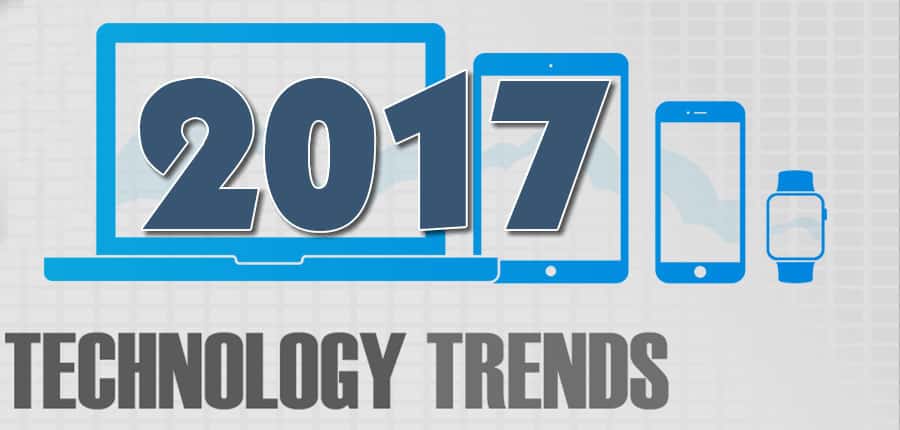What are the technological forces transforming the business world?

When we look back in 2020 to today, what will be the technologies that have wrought the most profound change and overturned traditional modes of conducting business in the intervening years?
Across the board, in companies of different shapes and sizes, business leaders around the world recognise that the world is changing. They know that disruptive technology will be a game-changer for their business.
A newly published report – Global Survey on 2017 Technology Trends – conducted by online custom research platform InsightBee by Evalueserve explores what technology decision-makers and managers think will be the top 5 technology disruptors over the next three years. The report also considers where technology is creating most opportunities for growth, by country and by industry.
Benchmarking on a world scale
The report allows organisations to benchmark themselves against others around the world. For example, how do their plans for investment in cloud technology compare with the plans of companies in six world economies?
Among the stand-out findings in the report…
- One in three companies globally lacks a mechanism to measure the impact or ROI of adopting disruptive technologies
- 73% of Chinese companies think an unwillingness to embrace disruptive technologies will have a negative effect on business – only 19% of US companies agree
- US companies expect to make their biggest investments in the next 12 months in cloud computing, advanced robotics and big data
The ones to watch
When the survey population was asked to identify their top disruptor, those ranked 1 to 5 were all data-centric: cloud, the internet of things, big data, artificial intelligence and data analytics. It’s notable that, collectively, these technologies will have a profound influence on the way in which data is gathered, analysed, used and stored. They have the power to radically transform our world as a consequence.
Indeed, globally, 70% of the businesses surveyed said disruptive technologies would significantly change the way they operate. One survey respondent commented that these new technologies give his company an edge over competitors: “The time required for IT procurement is almost nil. Now we can deploy mission-critical applications that deliver significant business benefits without any upfront costs and with minimal provisioning time.”
Meanwhile 80% were concerned that a failure to adopt these technologies would affect their revenue growth.
Some surprises also emerged from the report findings. It may seem that there’s news daily of another exciting application for 3-D printing. However, it ranked low on the list, with just 3% of respondents identifying it as the top technology disruptor for business. Again, only 5% of respondents rated mobile apps and platforms, an area in which there has been massive development in recent years, as a possible major disrupter.
Where’s the opportunity?
By comparing adoption levels with planned investment for each of the top five technologies, the report highlights potential areas for growth, by both country and industry.
For example, the current level of planned adoption and investment is relatively low for artificial intelligence. Potentially, this makes it an attractive segment with strong likelihood of incremental investment in the future.
A similar picture emerges with the internet of things (IoT), where adoption levels are only slightly higher than for artificial intelligence and planned investment is low. The manufacturing and financial services sectors are most likely to invest in IoT, but manufacturing has much higher adoption levels.
This suggests that while the financial services sector has high hopes for the potential of IoT, manufacturers have already found practical applications for the technology. With its large manufacturing base, this may be the reason why Germany leads the field among the countries in the survey in terms of both adoption and investment for IoT.
Cloud computing, by industry and by country, has seen significant levels of adoption and investment. The inference is that while there may still be untapped potential for growth, this could mean that cloud is approaching maturity and therefore other disruptors may represent a better opportunity.
The report also addresses the issues that could hold back wider adoption of these technologies and it emerges, perhaps not surprisingly, that security is a global concern: 21% of companies in the survey said they were extremely concerned about a cyber-attack. Moreover, whereas 78% of firms with annual revenues of over $2 billion feel prepared to safeguard personal data online, only 53% of mid-sized firms ($100 million – $1 billion) do so.
The top 5 trends with the power to disrupt accepted modes of working, as identified by the InsightBee survey:
1. Cloud (17%)
2. Internet of Things (14%)
3. Big Data (12%)
4. Artificial Intelligence (11%)
5. Data Analytics (9%)
About the survey
Conducted in October – November 2016, the InsightBee survey polled the views of various technology decision-makers and managers based in Germany, Singapore, China, the USA, the UK and India within five sectors:
• Technology
• Consulting & advisory
• Manufacturing
• Life sciences & healthcare
• Banking, financial services & insurance
Survey respondents worked in organisations ranging in size from 100–200 employees to over 10,000. Annual revenues range from $100 million –$1 billion to over $5 billion.
The complete findings of Global Survey on 2017 Technology Trends are available at https://resources.insightbee.com/top-global-technology-trends-2017
Have you read?
7 CEOs Share the Best Business Advice They’ve Ever Received
World’s Top 10 Most Powerful People Since 2009 On Forbes list
Credit Score And Its Importance: The Whys and Hows
4 Tools Every CEO And Business Owner Must Try
Written by: Manoj Madhusudanan.
Bring the best of the CEOWORLD magazine's global journalism to audiences in the United States and around the world. - Add CEOWORLD magazine to your Google News feed.
Follow CEOWORLD magazine headlines on: Google News, LinkedIn, Twitter, and Facebook.
Copyright 2025 The CEOWORLD magazine. All rights reserved. This material (and any extract from it) must not be copied, redistributed or placed on any website, without CEOWORLD magazine' prior written consent. For media queries, please contact: info@ceoworld.biz








